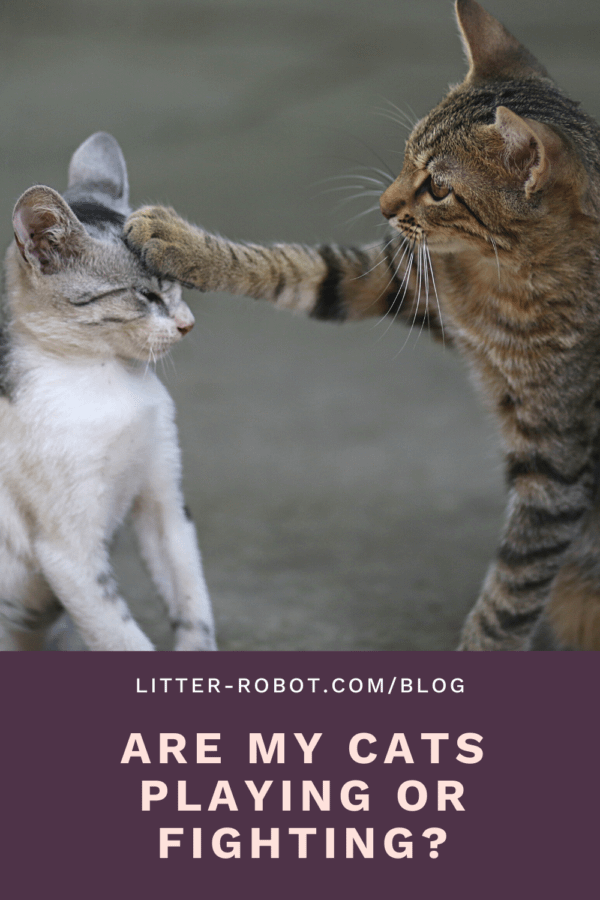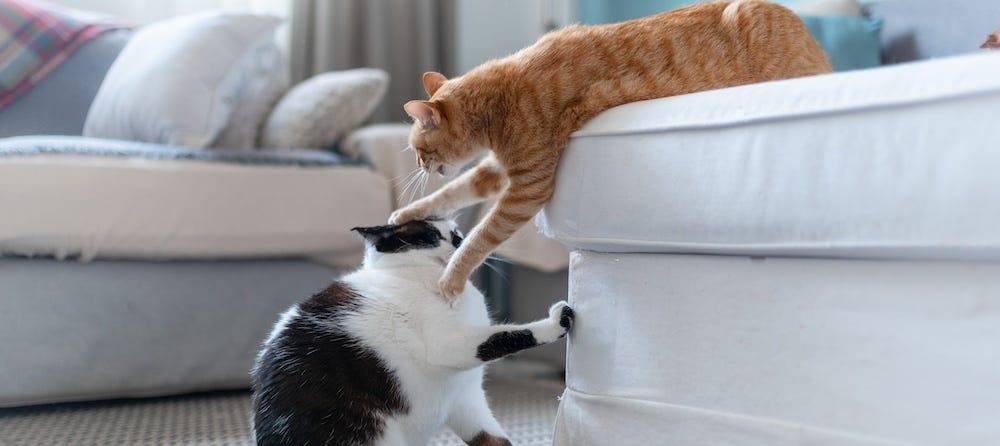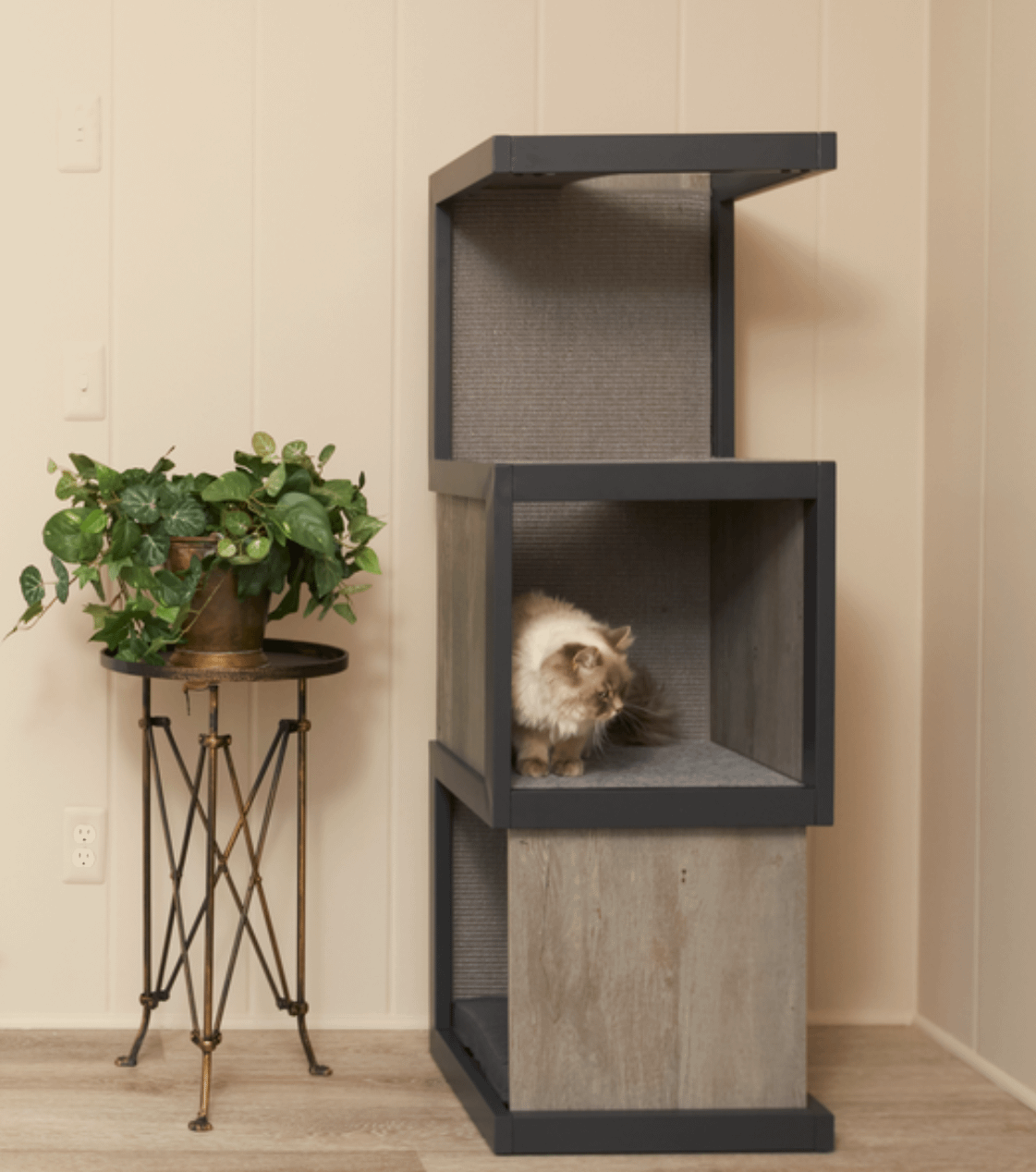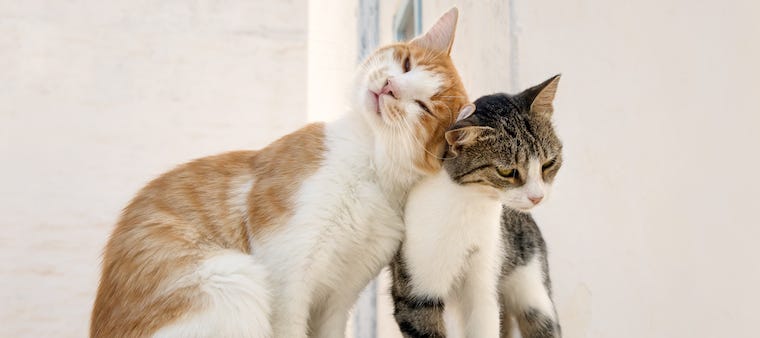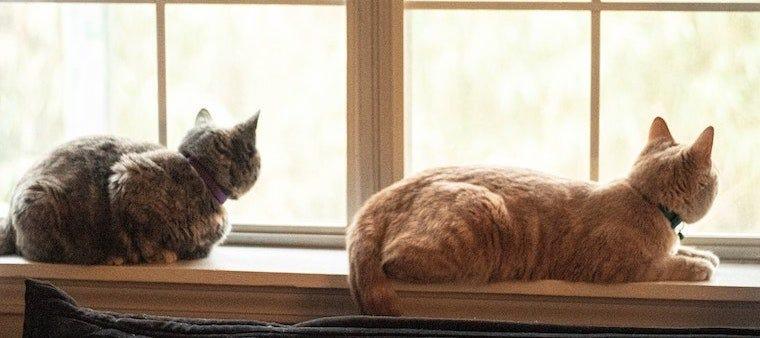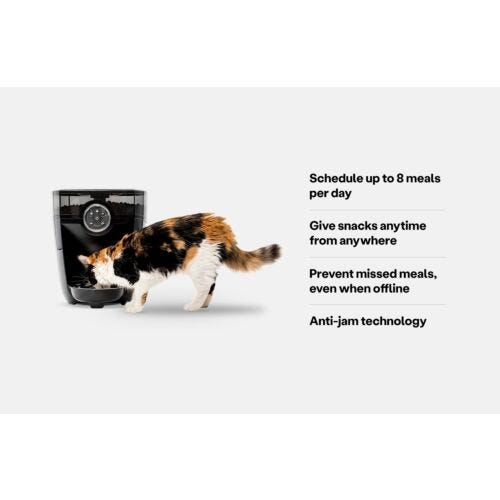It’s not always easy to tell if your cats are playing or fighting because the two can look very similar. Cats chasing each other, cats batting at each other, and cats jumping on one another is normal behavior when they’re playing—but can also be seen when fighting. Additionally, cats are known to play a bit aggressively, which might make you think they’re not having a happy interaction. The good news is, this guide is going to teach you how to tell if cats are playing or fighting. Here’s what you need to know!
Cats often play in the same ways they fight
Mock fighting or play aggression is normal behavior for cats. But it isn’t always easy to tell the difference between these and real aggression. There are ways to determine if they’re playing or fighting, such as body language and observing the nature of the fight. Here are the signs to look out for to spot the difference between playing and fighting.

Observe their body language
Body language is one of the easiest ways to tell if cats are playing or fighting. When cats are playing, you’ll notice their bodies are relaxed and they take breaks during play. They also take turns during play, letting one be dominant and then switching roles.
Typically, play fighting is silent. But what about hissing? Hissing can be harmless in some cases. While hissing is usually thought of as a sign of being annoyed or threatened, it’s also a way cats communicate. Hissing can also be a warning sign of pain, annoyance, stress, or an indication the play is too rough.
On the other hand, do cats growl when playing? Not usually: Growling is often a sign of fighting behavior. Additionally, cats’ ears will be pinned back and their fur or tails will be puffed during aggressive or stressful interactions.
Signs of friendly play
- Biting without causing injury
- Chasing
- Claws are sheathed or retracted
- Relaxed body language with ears pointed up
- Silence
Signs of aggressive play
- Thrashing their tails back and forth
- Ears pinned to the tip of their head
- Dilated pupils
- Whiskers out to the side
- Light hissing
Signs of real fighting
- Puffing up the fur or tail
- Defensive postures
- Hissing with bared teeth while leaning away from each other
- Ears flattened or held back
- Growling or grumbling
What about rough play between kittens?
Compared to adult cats, it’s a little harder to decipher when kittens are play fighting or actually fighting. Why? Because kittens tend to play fight noisily—but the key word is “play”! Some hissing, growling, or whining during a kitten tussle is typically nothing to be concerned about. In most cases, you won’t find young kittens fighting aggressively with each other.
What to do if your cat is playing too rough
If you’re concerned about your cat playing too rough with you or other cats, training can help redirect the unwanted behaviors. Be patient and loving with your cats and understand that punishments will not help. Cats don’t understand punishment, so breaking out the spray bottle or yelling at them can make the behavior worse. Even if you simply pull away from an aggressive cat, it can trigger their hunting instincts.
Give them individual space
Cats need space to claim their own territory. Set up shelves, a cat pyramid, or a cat tower in multiple rooms so they have a space to relax and be alone. This will also give your cat a place for activities to help work out any nervous energy.
Offer catnip
Catnip can be a good solution to help put your feline at ease and tame aggressive behaviors. It’s important, however, that you only offer catnip if you know your cat responds well to it. Catnip doesn’t affect every cat the same way, and can make some cats more aggressive.
Redirect their attention
When you start noticing things getting a bit tense between cats, try to redirect their attention and offer stimulation away from other cats. You never want to step in between aggressive cats. Instead, use a laser pointer or feather wand to redirect their attention.
Pheromone plugins
Cat diffusers such as Feliway can be useful tools to signal to your cat that everything is safe, calm, and secure. These diffusers emit an odorless, drug-free scent that mimics a cat’s pheromones to help calm an aggressive cat. When there’s tension between cats, the pheromones will induce a calming and happy atmosphere.
Reintroduce cats
If all else fails and you can’t redirect their attention with other activities, you may need to reintroduce your cats to one another. To do that, you’ll need to keep them in separate rooms, swap their scents, and feed them on opposite sides of a closed door. This helps them learn to stay calm while sensing each other. Next, start giving them supervised and limited visits to teach them the other isn’t a threat.
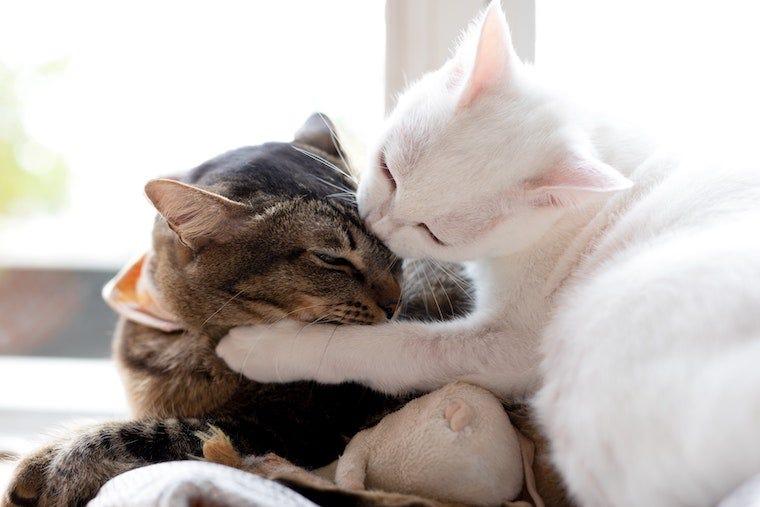
Most common causes of feline aggression
Feline aggression can be caused by direct interaction with another cat or human. It can also be redirected aggression from outside stimuli, like loud noises or another cat outside. Here are some of the most common causes of feline aggression:
- Fear or defensiveness
- Territorial issues
- Rough play
- Pain and irritability
Is it normal for cats to play rough?
Play aggression is normal behavior between cats, but there is a line where mock fighting can turn into real fighting. So is it normal for cats to fight? Yes—but you shouldn’t allow cats to “fight it out” because it will usually intensify aggression between them. Aggression in cats is a natural behavior for the species and is a normal part of social conflict, play, and predation.
Should you let your cats play fight?
Again, mock fighting is normal for cats and a behavior you can let them engage in. If the play fighting gets too aggressive or leads to actual fighting, you’ll want to disrupt the fighting and redirect the behavior. To break up a cat fight, don’t intervene directly, as your cats may wind up scratching or biting you. Instead, try to distract the cats and break their concentration by making a loud noise or sudden movement.
Help them get along
If you notice your cats fight more than they play, you may want to try reintroducing them by following the steps previously listed. Be sure that each cat has their own food, water, litter box, scratching post, and cat tree. Try separating these items and giving them their own space. Never punish them, as it would reinforce conflict. Instead, give them treats when you see them interacting in the desired way.
Once your cats are getting along better, try adding a self-cleaning litter box to help with any territorial issues that may arise because of a dirty litter box.
Keep cat conflict out of the house
Keeping conflict out of the house isn’t always easy with cats, but it’s definitely possible. While play aggression is normal, do your best to stop tension between your cats before it escalates. If aggression is a common occurrence, take action immediately so the negative behaviors don’t worsen.
Finally, it’s important for each cat to have their own safe space to escape to so they can relax and destress, especially after a cat scuffle.
Help deter aggression on the front end by providing your cats with their own piece of cat furniture, like a cat tower, cat pyramid, or shelves! This will give them the space they need away from other animals along with hiding spots to decompress.
FAQs
Why do friendly cats bite each other?
Cats bite each other for various reasons, including playing, signaling to stop grooming, aggression, and overstimulation.
How do you know when cats are bonded?
Cats that are bonded will share their scent by rubbing their heads and bodies together. They’ll also usually engage in licking and grooming each other, and they’ll play without being truly aggressive. For keeping your home peaceful, read our guide on managing multi-cat households.